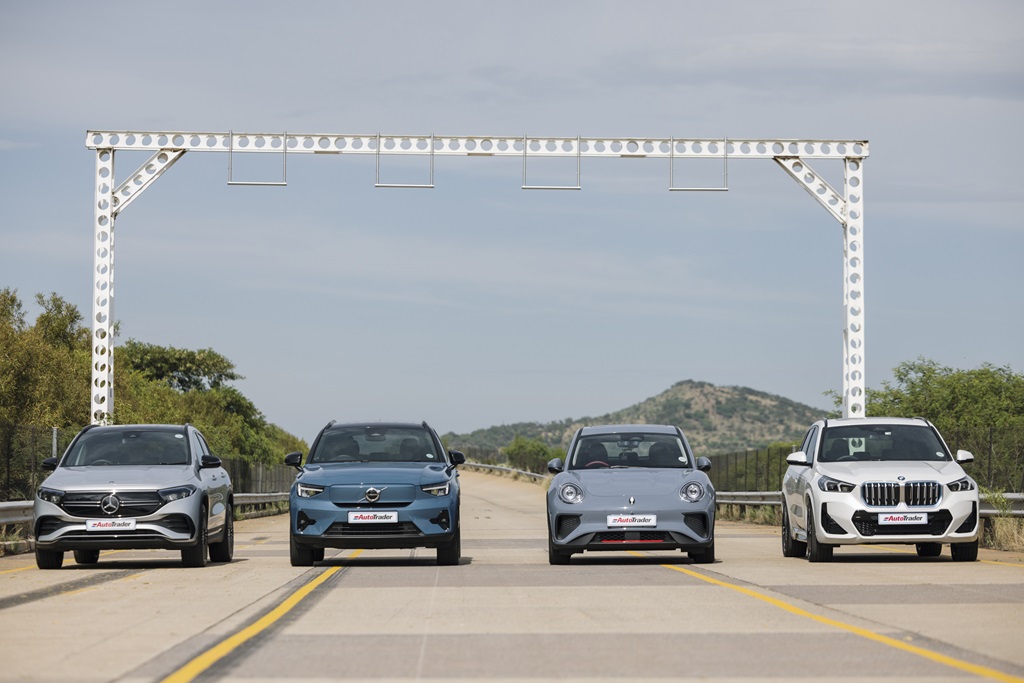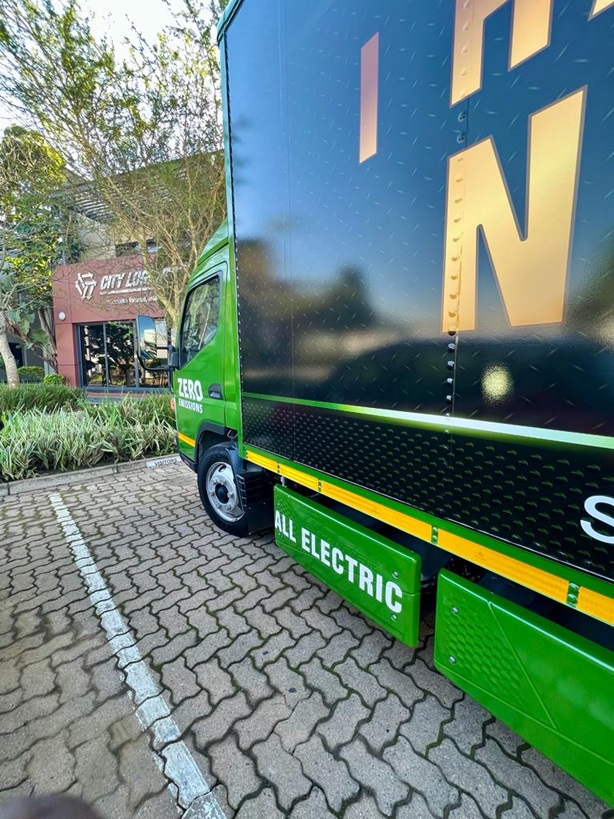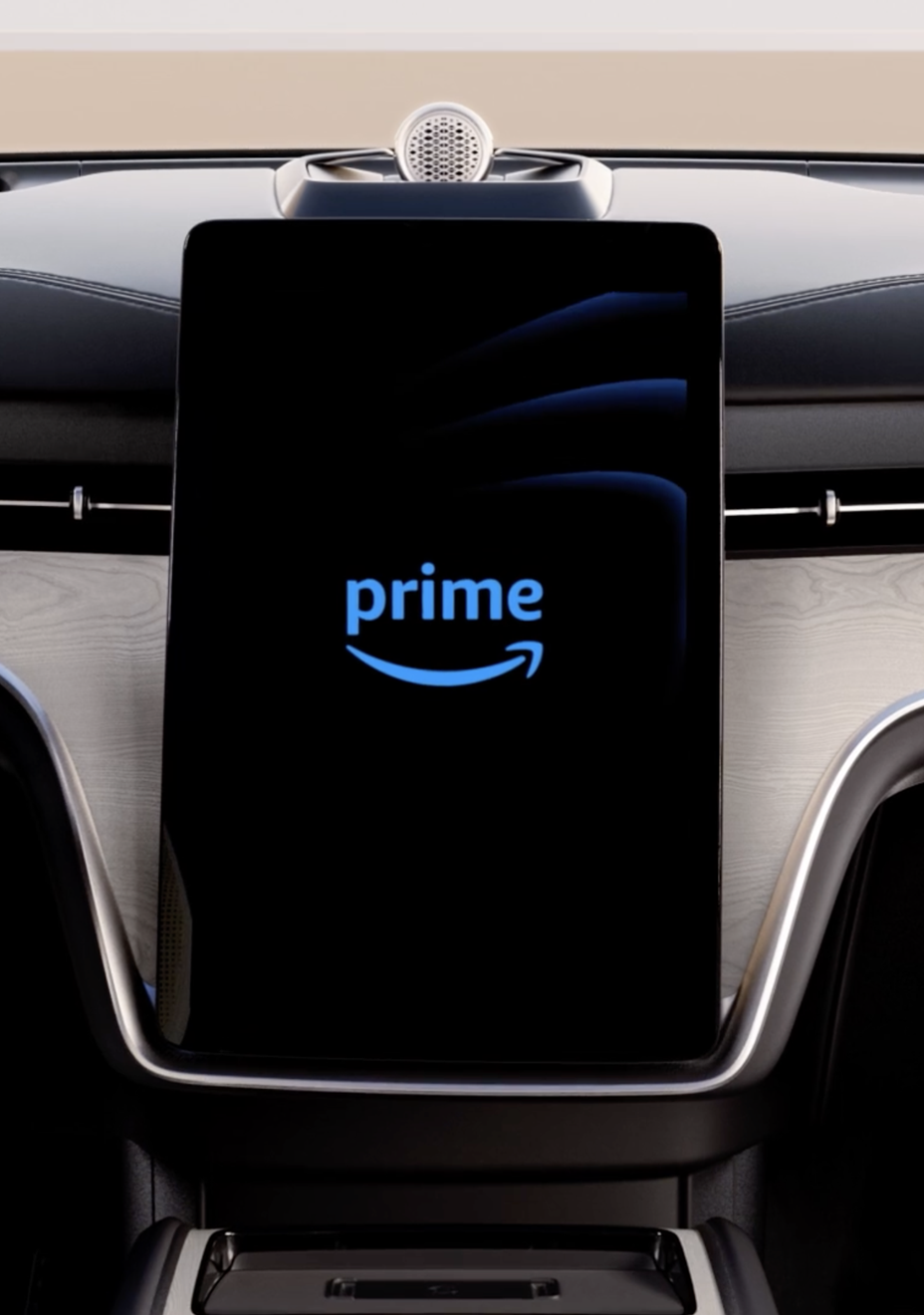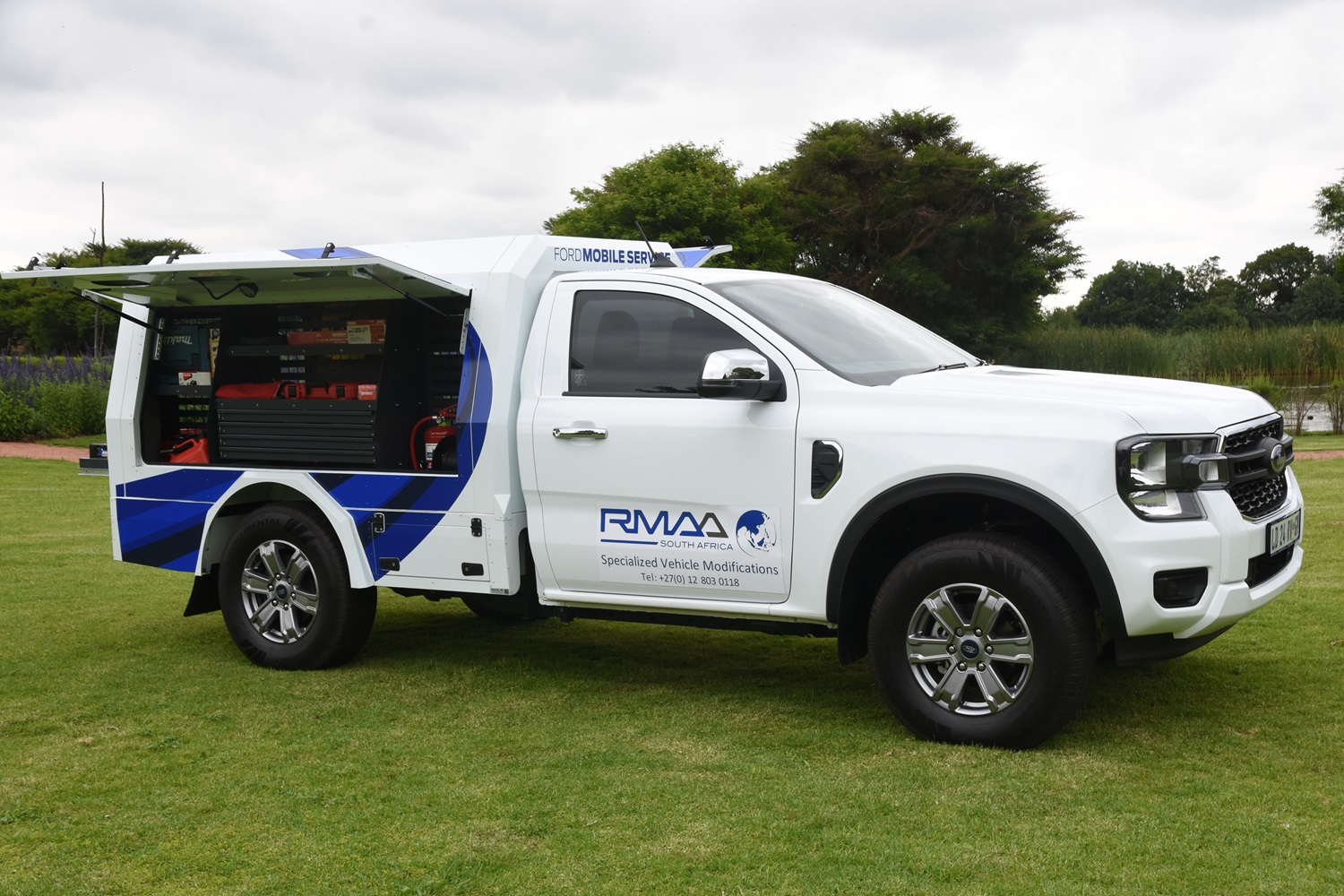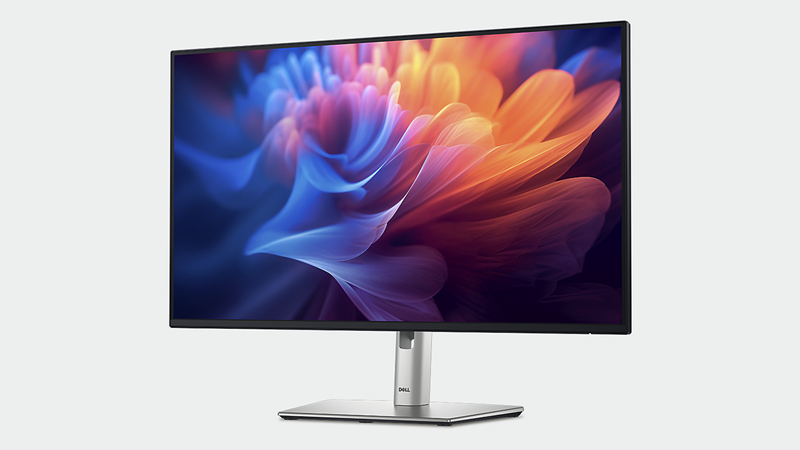The Hilux legacy is legendary. Since its introduction in 1969, the model has etched an enviable reputation for itself across the globe, where its durability, strength and outright quality, has entrenched itself in the hearts of its owners.
Nowhere is this truer than in South Africa, where the venerable Hilux nameplate is regarded, not merely as a mode of transport, but as a trusted member of the family.
“This is echoed in the sales charts where the Hilux proudly flies the flag of SA’s top selling vehicle, and serves as both a business partner and leisure transport for the family. Hilux’s sales are a testament to the trust that our customers place in the product and reinforce the Toyota pillars of Quality, Durability and Reliability” says Calvyn Hamman, Senior Vice President of Sales & Marketing.
Within the light commercial vehicle market (LCV), customers no longer only expect toughness and durability from their ‘bakkie’, but are placing much greater emphasis on comfort, convenience and design. The ‘bakkie’ of today needs to fulfil a multi-purpose role, and not merely as a ‘jack of all trades’ but in fact it needs to be a ‘master of all’.
“The new Hilux builds upon the rock solid reputation of its predecessors, and delivers a ‘bakkie’ that is tougher than ever before, while at the same time providing customers with the comfort, refinement and features of a passenger car”, says Glenn Crompton, Vice President of Marketing.
Advanced Design
Perhaps the most striking feature of the new Hilux is the advanced exterior design. The design team concentrated on creating a vehicle that would project a tough stance, whilst also exuding a sense of innovation and refinement, in order to evoke a more emotive connection between driver and ‘bakkie’.
At the front, a prominent grille with strong horizontal bars extends towards the wrap-around headlights, creating a powerful, unified look. Protruding, integrated fender flares add to the rugged appearance.
Viewed from the side, muscular wheel flares perfectly tie in with the strong virtual line which flows from the front, to the rear of the vehicle. The sloping rear side window and cabin silhouette form a visual parity with the slanted rear design. The slanted theme is further reinforced by the strong design line which harmoniously flows from the rear combination lamps to the side profile.
The cab roof has been carefully shaped to improve both its styling and practicality. It now features an aerodynamic ‘pagoda’-style V-shape which helps channel air over the roof and off the sides of the vehicle, rather than into the deck area, preventing turbulence and drag.
Redefining the Interior
The interior design of the Hilux sets new standards for a light commercial vehicle. The same design ethos of tough and advanced was used to create an interior that combines ruggedness and practicality with innovation and design. Flowing metallic trim which runs across the dashboard creates a sense of style and refinement.
Taking centre stage in the interior theatrics is the new high-tech touch screen audio system, which seems to ‘float’ from the centre of the dash. Featuring a flat-panel design, flick operation and capacitive touch technology, the advanced audio system is a marvel. When the unit is powered off, another party trick is revealed, as all illumination is suspended creating a tablet-type look and feel.
The driver instrumentation follows suit with higher grade models receiving a full colour 4.2″ TFT multi-information display, with easy-to-read displays and powerful shapes, all adding to the advanced toughness theme. The driver is able to access a raft of information, at the touch of the four-way directional buttons mounted on the newly designed steering wheel.
The steering wheel makes use of a strong horizontal spoke design, to harmonise with the rest of the interior and features rake and reach adjustability, as well as thumb rests and a thicker rim, to provide superb comfort and feel.
Cool blue illumination flows throughout the cabin, from the easy-to-read instrument cluster to the air-conditioning control panel, audio system and switchgear illumination.
All Hilux models are fitted with tough and durable patterned black seat upholstery tailored to their usage. All three designs offer excellent durability without compromising on design and a sense of quality. Workhorse models focus more on robustness whilst mid-grade and high-grade models pursue a feeling of luxury and modernity. Leather upholstery is available as an optional extra on high-grade models.
The overall execution of the interior is that of high quality, innovative design and user friendliness. Comfort and convenience were strong influencers in the interior design and as such, the Hilux is equipped with many storage areas and features to improve usability.
Improved Packaging
The new Hilux benefits from increased interior space and greater seat comfort, as well as a host of practical storage compartments essential to a vehicle equally at home in both business and leisure environments.
The driver’s seat hip point has been raised by 10mm and the height adjustment range increased by 15mm. Offering occupants head and shoulder room increases of 8 and 19 mm respectively, the front seats feature a new frame structure with a longer, amply padded seat cushion optimised to provide great comfort. The rear seats receive similar treatment, with a reduction in thickness of the rear seat back providing rear occupants with 10mm greater leg room.
Double cab models employ a 60:40 split ‘tip-up’ rear seat cushion for even greater flexibility, with a handy storage compartment recessed into the floor.
A cool feature (pardon the pun) is the Cool Box fitted to high-grade models. Taking the form of a second glove box, it cleverly uses the air-conditioner system to cool or heat items placed inside.
A large centre console provides ample storage space as well as doubling up as an armrest. A 12-volt power outlet is standard across the range, with a second outlet forming part of the range topping model’s specification sheet.
The door pockets will comfortably stow 1 litre plastic bottles with a host of cup holders and convenience hooks, including a ‘ceiling hook’ located above the rear seats on double cabs and shopping hooks affixed to the rear of the front seat on Double cab high-grade models, being present throughout the cabin.
Foundation of Toughness
Underpinning the new model is an all-new frame, which is designed to combine improved handling, ride comfort, NVH performance and collision safety with outstanding durability in even the most extreme driving environments. Improvements include 30mm thicker side rails and cross members which deliver 20% greater torsional rigidity whilst also increasing durability.
The number of connection points from chassis frame to upper body has been increased, accompanied by a 45% increase in spot welds (from 268 in the previous generation to 388).
Contributing to the durability of the new model is a new heavy-duty under-cover with additional reinforcement and increased thickness. The angle of the front section has been revised to contribute to an improved Cd value.
The body makes use of higher tensile steel sheet (up to 590MPa). This achieves greater body strength while reducing weight. The more rigid chassis frame and new body serve as the foundation for the completely revised suspension, delivering superb all round performance.
Absorbing the Elements
A new rugged suspension package has been developed, which addresses the need for both outstanding ride comfort and durability. The Hilux utilises a double-wishbone front suspension design and leaf-spring type suspension with twin shock absorbers in the rear.
The length of the leaf spring has been increased by 100mm to 1400mm, suppressing road surface vibration and the attachment point of the rear suspension moved to the front of the spring. Moving the attachment point 100mm forwards and lowering it by 25mm contributes to enhanced steering stability.
In addition, the newcomer has larger-diameter shock absorbers mounted in a new location for increased durability, stability and more effective control of small vibrations. The revised geometry also delivers improved rear-axle wheel articulation, with a 20% improvement in wheel travel facilitating even better off-road performance.
The steering column has been redesigned to reduce the transfer of vibration from the road surface, and the hydraulic power steering system has been fine-tuned to offer improved steering feel. Newly added telescopic adjustment forms part of the more lifestyle orientated models.
Pitch and Bounce Control
An innovative feature of the new Hilux is Toyota’s Pitch and Bounce Control system, which automatically adjusts engine torque in direct response to road surface conditions. The system is able to reduce the pitching motion of the body, improving ride comfort and handling.
Pitch and Bounce Control uses wheel-speed sensor information to establish when the nose of the vehicle is either lifted or lowered by road surface undulations. In order to prevent excessive fore and aft movement of occupants, engine torque is increased when the nose of the vehicle dips and conversely decreased when the nose lifts – helping to smooth out the ride and deliver superior ride comfort and handling.
Heading Off-road
For buyers venturing off-road, the new Hilux is naturally available in part-time four-wheel-drive derivatives, building on the acclaim of its forefathers. A highlight of the new system is the electronic rotary 4WD switch housed within the dashboard, which replaces the previously employed ‘second gear lever’, offering greater ease-of-use as well as contributing to a ‘cleaner’ interior design.
Using the 4WD change-over switch, the driver can select between 2WD, 4WD and 4WD with low range, up to speeds of 50 km/h. Ensuring an even distribution of torque are new high-capacity Limited Slip Differentials (LSD) housed in the front and rear axles. The enhanced LSD units use a newly developed solenoid based actuator.
Supporting the Driver
Delivering on the promise of Advanced, the new Hilux is fitted with a number of electronic driver support systems to make light work of any task. A highlight is the inclusion of Toyota’s revered Active Traction Control system (A-TRC) found in the Land Cruiser family of vehicles.
A-TRC uses a combination of engine torque control and brake pressure modulation to provide maximum traction under all conditions. On detecting a loss of traction the system automatically brakes the relevant wheels and simultaneously re-distributes drive torque to those which have grip.
Hill-start Assist Control (HAC) prevents the vehicle from rolling backwards during an uphill start when the driver releases the brake pedal. The system temporarily maintains braking pressure to all four wheels for a maximum of two seconds in order to hold the vehicle in place.
Downhill Assist Control (DAC) is exclusively fitted to 4×4 derivatives and helps the driver regulate vehicle speed on steep, slippery or bumpy downhill gradients. Under circumstances when engine braking alone is insufficient to control vehicle speed, the system automatically employs the braking system to maintain a constant decent speed – with the accelerator and brake pedals left untouched by the driver.
A revised deck design has been adopted, which offers improved packaging with more usable space, increased re-enforcement and greater overall strength.
Providing the Drive
Powering the new Hilux will be a range of newly developed engines, which offer improved power output, efficiency and refinement. The new ‘Global Diesel’ series was developed from the ground up, and feature a number of advancements to provide a superb driving experience both on – and off road.
The GD series engines are offered in 2.4 and 2.8 litre guise, with both versions placing strong emphasis on torque output and low-speed tractability. Both variants make use of DOHC, 16-valve, four-cylinder inline architecture and utilise Variable Nozzle Turbocharger (VNT) technology, which deliver the compressed air through a new front-mounted intercooler. Forming the starting point of the diesel range is a 2393cc unit offering 110 kW and 343 Nm, which is employed in the utility-focussed models. A higher output variant of the 2.4 litre is also on offer, delivering the same peak power with a boost in torque to 400 Nm, available between 1600 and 2000 rpm.
Serving as the diesel flagship, the 2755cc GD engine offers buyers a stout 130 kW and effortless 420Nm from 1600 to 2400 rpm in manual guise – automatic transmission versions will receive a boost to 450Nm over the same rpm span.
The fuel efficiency of both engines has been improved by 9% over the units they replace. The high-output 2.4 litre GD engine delivers class leading fuel efficiency, weighing in at a mere 7.3 litres per 100 kilometres. The 2.8 litre GD engine strikes a formidable balance between power and economy, returning an impressive 8.5 litres per 100 kilometre figure.
The efficiency of the intake and exhaust ports, and the fuel injection system, has been optimised to maximise torque. Two intake ports are used in unison, according to the engine speed; a tangential port that produces a high-swirl flow, agitating the air/fuel ratio mixture to enhance combustion efficiency and a helical port that achieves a high-flow volume.
The GD engines feature an electronically-controlled, common-rail type fuel injection system that achieves higher pressure and more advanced injection pressure control. A new piston shape has also been adopted to match the new shape of the combustion chamber.
An interesting note on the new 2.4 and 2.8 GD series diesel engines is the reduction of compression ratio compared to the outgoing 2.5 – and 3.0 litre D-4D powerplants (16 and 13% respectively). Even though diesels are designed to have high compression ratios, and high compression ratios provide efficiency, it’s not all good news. A more forceful and violent explosion within the combustion chamber produces more noise in the form of diesel ‘knock’ and ‘rattle’, and potentially more engine vibration. High compression ratios also produce more environmentally damaging oxides of nitrogen, commonly referred to as NOx.
This reduction in compression ratio therefore contributes to a smoother and quieter running engine, which culminates in a more refined powertrain, as well as a reduction in emissions. Toyota’s engineers have managed to improve output and thermal efficiency, despite the reduction in compression ratio – creating a win-win situation.
Three petrol engines are on offer, a 2 litre 4 cylinder unit employing VVT-i with 100 kW and 182 Nm forming the starting point of the petrol range. This is supplemented by a revised version of the familiar 2.7 litre VVT-i engine, delivering 122 kW and 245 Nm with a 10% improvement in fuel economy.
Revisions to the 2694cc four cylinder unit include lighter valvetrain components, a newly shaped intake tumble port, reshaped combustion chamber to support a high compression ratio and the adoption of VVT-i for the exhaust side. This in turn equips the 2.7 litre unit with Dual VVT-I, with the valve timing of both intake and exhaust sides optimised to improve efficiency and power delivery.
Further efficiency measures include the application of a Teflon coating to the connecting rod bearings and the adoption of a low-friction timing chain and oil pump.
Completing the line-up is the familiar 4.0 litre V6, delivering a throaty 175 kW and 376 Nm.
Transmitting the Power
Forming the link between the advanced new engines and the driven wheels, are all-new slick 5 – and 6-speed transmissions. Workhorse models are equipped with a rugged 5-speed manual transmission with higher grade models receiving an option of either a 6-speed manual or 6-speed automatic transmission.
The gear ratios of the new 6-speed manual has been optimised to feature a 10% lower first gear for enhanced low-speed torque delivery, with a 23% higher ‘top gear’ providing greater fuel efficiency and relaxed high-speed cruising.
Ensuring the durability and reliability required of any off-road vehicle, the gear shape and number of teeth have been optimised for strength, and the load tolerance of each gear increased. The bearing support structures on the front of the countershaft have been changed, and the current roller bearing replaced by a combined roller and ball bearing to effectively balance axial and radial loads.
A world first for the segment is the fitment of the intelligent Manual Transmission (iMT) on selected models. iMT effectively incorporates rev-matching technology on both up – and downshifts, to provide an ultra-smooth drive as well as assisting drivers with smooth take-offs.
In keeping with the more leisure-focussed interior, the gear lever has been shortened to provide a slicker (and more passenger car like) shift action and feel.
Fans of ‘self-shifter’ transmissions will revel in the new 6-speed Super Intelligent Electronically Controlled automatic transmission. This high-tech unit sees the first appearance of ‘High-speed Gear Effective Utilisation Control’ for a Toyota vehicle.
This control logic evaluates the use of higher gears in real time based on driving conditions. For instance, taking into account vehicle loading and throttle setting, the system will determine whether to upshift to 6thgear or remain in 5th, to achieve the optimum balance of driving power and fuel efficiency.
Deceleration Downshift Control optimises downshifts when decelerating to reduce fuel consumption. This system shuts off the fuel supply to the engine as well as downshifting automatically to promote engine braking.
Artificial Intelligence (AI) Shift Control, makes use of bespoke control logic to prevent the transmission from up – or downshifting unnecessarily in response to sudden throttle opening or closures.
Diesel models fitted with the new 6-speed transmissions are badged as GD-6, with the entry level derivatives using 5 speed transmissions carrying a GD badge.
Power to Pull
The advanced new powertrains permit the new Hilux to tow a formidable load. Towing capacity has been increased across the range (bar the entry level petrol model), with the 2.8 GD-6 4×4 models boasting a monumental 3.5 tonnes of tractive capability.
Selecting the Drive Mode
A first for Hilux is the fitment of the Drive Mode switch. Drivers are able to select between ECO and POWER modes based on driving conditions. ECO mode reduces power consumption in relation to acceleration, heating and cooling to improve fuel economy, whilst POWER mode offers the driver sharper acceleration response for a more engaging drive.
A Grade for All
Fitting with the advanced new design, the new Hilux offers a comprehensive spec level with some features being a world-first for the segment. A strong focus has been placed on safety specification, and as such the new Hilux features a host of safety features including a driver airbag, ABS, Brake Assist and an anti-theft system as standard across all grades.
The new Hilux is available in four grades, each tailored to the specific requirements of the user’s application and usage. The entry ‘Workhorse’ grade, as the name suggests is aimed at utility usage and provides buyers with the essential specification items such as power steering, remote central locking, electric windows and the aforementioned safety specification.
The mid-grade ‘SRX’ strikes a balance between function and form adding items such as Tilt & Telescopic steering adjustment, multi-information display, a 12-volt power outlet, steering switches and USB + Auxiliary inputs.
Serving as the flagship across all three body-shapes is the ‘Raider’ grade. In this execution the new Hilux serves up a full complement of comfort, convenience and safety features – giving buyers a ‘bakkie’ with SUV-like feel.
Some of the spec highlights include automatic climate control, full colour multi-information display, touchscreen 6-speaker audio system, Bluetooth, USB, auto lights, daytime running lights (DRL), 17″ alloy wheels, metallic interior trim and elegant chrome exterior accents.
A new addition to the range is the SR grade, which caters specifically to mining customers. This model derivative is based off the SRX grade and adds front side and curtain airbags as well as Vehicle Stability Control to comply with a full 5-star ANCAP safety specification level. It foregoes an audio system and side-steps due to the utilitarian nature of the vehicle.
A Body-shape to suit you
Three body-shapes are offered as before; namely Single, Xtra and Double Cab. A standout feature of the Xtra cab is the inclusion of rearward opening access doors to facilitate easy loading into the rear compartment.
Safety as a Priority
The Hilux’s new stronger ladder-frame chassis affords it increased deformation resistance, whilst its energy absorption performance has been increased 15% over that of its predecessor. This improves safety performance and occupant protection.
The risk of pedestrian injury has also been reduced by the adoption of impact-absorbing structures to the front bumper, bonnet, fender bracket structure and cowl structure, reducing impact force to the head and the legs of pedestrians during a collision.
Spearheading the passive safety front is a host of Supplemental Restraint System (SRS) airbags. All models are equipped with a driver airbag, with the mid-grade and single cab Raider models adding a passenger airbag to the list. Mid-grade double cabs feature front side airbags in addition to the driver and passenger units.
A standout feature is the addition of a new driver side knee airbag on all double cab models.
Double cab Raider models boast a total of 7 airbags comprising driver and passenger front, front side, driver knee and curtain shield airbags.
ISOFIX attachment points and a three-point rear centre seatbelt add to the double cab features.
The new Hilux is also equipped with a comprehensive array of active safety systems, to help prevent collisions, maximise vehicle stability and even help drivers control trailers during difficult driving conditions.
The familiar brake control systems; ABS, Brake Assist (BA) and Electronic Brakeforce Distribution (EBD) form the first level of active safety. A new addition is the Emergency Brake Signal, which warns other vehicles of an emergency braking condition by flashing the hazard lights.
Selected models are further equipped with Vehicle Stability Control (VSC), which is activated when sensors detect under – or oversteer conditions. The system uses automatic control of engine output and individual wheel brakes, to counter the effect of under – or oversteer, significantly enhancing vehicle stability and ultimately safety.
Trailer Sway Control (TSC) uses both engine output and individual brake control to reign in a wayward trailer, preventing continued sway movements.
The above safety systems are further supported by A-TRC, DAC and HAC described in detail in the off-road driving section.
Grade Walk Summary
Workhorse models:
- Power windows with auto down for driver
- Reading lamp with illuminated entry system
- 12 volt power outlet
- Eco indicator
- Black electrically adjustable mirrors
- ABS brakes
- Driver airbag
- Remote central locking with auto door lock
- Anti-theft system
SRX models add:
- Steering switches
- Tilt and telescopic steering adjustment (Extra and Double cab)
- Economy meter
- Multi Information Display
- Audio system with Radio/CD, Bluetooth and USB
- Door ajar display
- Over fenders
- Side steps
- Driver knee airbag
- ISOFIX on double cab
- 3-point rear centre seatbelt
- Eco drive mode (Eco/Power switch)
- 17″ Steel wheels
Raider models add:
- Metallic interior accents
- Luxury patterned seat fabric
- Reverse camera
- Telescopic steering column adjustment
- Full colour TFT Multi Information Display
- Touchscreen audio with DVD and video playback
- Cooling function in glove compartment
- Auto lights with follow me home
- Daytime Running Lights (DRL)
- Chrome grille and exterior trim
- Wide integrated overfenders
- Variable intermittent wipers
- Automatic climate control
- 2 x 12V power outlets
- Intelligent Manual Transmission (iMT)
- Hill Assist Control (HAC)
- Downhill Assist Control (DAC) [4×4 models only]
- 17″ Alloy wheels
Model Line-up
Single Cab
- 2.0 VVTi 5MT
- 2.0 VVTi 5MT A/C
- 2.4 GD 5MT
- 2.4 GD 5MT A/C
- 2.4 GD-6 Raised Body SRX 6MT
- 2.4 GD-6 4X4 SRX 6MT
- 2.4 GD-6 4X4 SR 6MT
- 2.7 VVTI Raised Body SRX 5MT
- 2.8 GD-6 RB Raider 6MT
- 2.8 GD-6 4X4 Raider 6MT
Xtra Cab
- 2.4 GD-6 Raised Body SRX 6MT
- 2.8 GD-6 Raised Body Raider 6MT
- 2.8 GD-6 4×4 Raider 6MT
Double Cab
- 2.4 GD-6 Raised Body SRX 6MT
- 2.4 GD-6 4X4 SRX 6MT
- 2.4 GD-6 4X4 SR 6MT
- 2.7 VVTi Raised Body SRX 5MT
- 2.8 GD-6 Raised Body Raider 6MT
- 2.8 GD-6 Raised Body Raider 6AT
- 2.8 GD-6 4X4 Raider 6MT
- 2.8 GD-6 4X4 Raider 6AT
- 4.0 V6 Raised Body Raider 6AT
- 4.0 V6 4X4 Raider 6AT
Service Intervals & Plans
All models are accompanied by a 5 year or 90 000 kilometre service plan (whichever occurs first) with service intervals set at 10 000 kilometres.
Pricing
Pricing of the new Hilux remains very competitive, with some models actually being priced lower than the versions they replace, despite a significant upgrade in specification. A strong focus has been placed on maximising the value proposition of the new range and offering customers excellent value.
Single cab:
From R228 900 to R 435 900
Xtra cab:
From R333 900 to R470 900
Double cab:
From R 377 900 to R593 900






















































